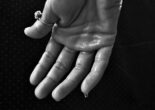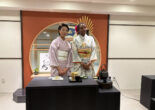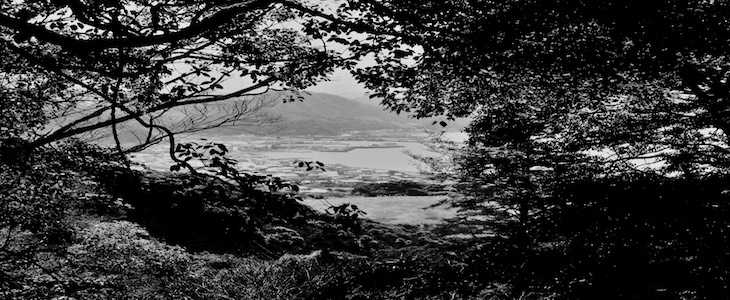
You often meet foreign residents in Japan that come with a dream – to see something, or master a skill, or to learn about themselves. Sleiman Azizi came from Sydney, Australia to experience a life here. Azizi is a permanent resident of Japan who arrived in 2001, and found himself shooting photographs of his surroundings, living Japanese martial arts, and eventually writing five books about his insight into budo taijutsu, a rich martial arts tradition.
I asked Azizi about his experiences, and what he went through, from preparing for his new life in Japan, to getting settled, to experiencing Japan through his eyes. What resulted was a low-key exchange that became a fascinating conversation.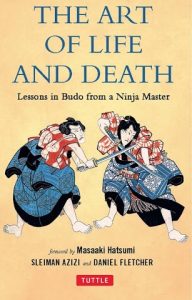
I started at the beginning, and asked him about why he came to Japan in the first place. He says, “Moving to Japan was a whim that I didn’t realise I had had. I was studying martial arts in Sydney and before one class, I was sitting outside reading the newspaper. One of the guys noticed that I was looking at the overseas Japan jobs classified. He asked me straight away if I was moving to Japan for training, and even though I hadn’t really been thinking about it, I said yes. Well, this chap was incredulous. He straight away blurted out, “But people only say they are going. They don’t really do it!” I guess that kind of settled it for me and so off I went.”
Well, he really did it. It takes a lot of nerve to pack up and go. Azizi found, like many who make the jump to Japan, that the gateway was teaching English. He told me about obtaining a first job in Japan.
“It really was easy for me. I simply applied with a few English language schools. Three of them responded. I was late to one interview by a couple of minutes which shut the door on that company and had a bad vibe about the second company that I interviewed with,” he says. In the early 2000s, jobs were plentiful and easy to come by, but then as now, punctuality is regarded highly. He did all right on the third try. “The third company hired me straight away after about 30 seconds of demo one-to-one lesson.”
Like a lot of beginning English teachers in Japan, he had specialized in something other than education or language instruction. His area was sports science. He explains, “I was running a boutique five-star health club in Sydney but that really wasn’t my thing. I was [doing] personal training too but never really liked it. I don’t like being responsible for another person’s motivation and the industry was too fashion directed. I’d always envisioned personal trainers to be on par with physiotherapists in terms of knowledge, respect and professionalism but the industry didn’t really seem to be agreeing with that back then. It was easy for me to say goodbye.”
He settled in Setagaya, a ward of Tokyo proper. Setagaya is the second most populous ward after Ota, and right against the Tama River, which is the boundary between Tokyo and Kanagawa Prefecture. It’s a lovely place, great for raising families with its quiet, residential neighborhoods. It’s got some treasures like the Todoroki ravine, a meandering river valley which is a rare sight in Tokyo, and the banks of various rivers that provide wide open spaces, hard to come by in the Tokyo conurbation. It’s also home to one of the two remaining trams in Tokyo, passing by some history-laden temples and parks.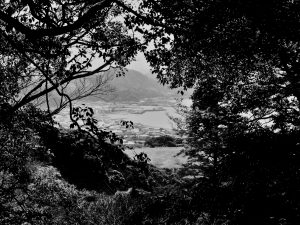
Starting out in a new town, you don’t always know the atmosphere of a neighborhood or building. That first apartment in Setagaya had a surprise for him. He tells me that although it was a great area, something strange happened at the building. He says, “One day I came home to find about 20 or so guys all queuing up to the entrance of the basement floor. At the time I didn’t know what they were queuing up for.” He learned that the basement space was a studio for adult films.“ But he took it in stride. “It was only later I learned about that part of Japan. I just laughed.”
But it was too far from the source that Azizi continued to gravitate to, Bujinden, the main dojo for budo taijutsu, located quite far from there in Noda City, Chiba Prefecture. He eventually found a convenient and more economical place to both central Tokyo and Noda in Soka City, Saitama Prefecture.
He says, he decided on a place called Matsubari Danchi, “about halfway between Koshigaya and Kita Senju on what they now call the Tobu Skytree Line. Back then it was known as the Tobu Isesaki Line. Much more ‘blue collar’ but much, much closer to training.” This neighborhood, Matsubara Danchi, is fabled for its connection to Matsuo Basho, the revered haiku poet who made a journey in the late 1600s from what was then the capital, Edo, to the deep north . On his way, Basho looked back on the avenue of trees planted at Soka, along the human highway and wrote some celebrated haiku to honor the place. Today, it has a stately avenue of trees and a picturesque bridge that remembers the time and the poet. Since the poet’s time, sembei rice crackers, with flavors unique to the district, have become quite famous there. But more important than the local specialty for Azizi was the proximity to the source of the martial arts he was bent on studying.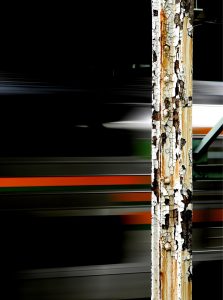
I asked him about the challenges of adjusting to a new culture and way of life, and he said some things that resonated with me. I’ll explain later. But for now, I want to share with you Azizi’s impressions. When I asked him about culture shock, and he quite candidly told me, “You know, I’m not sure there was a real challenge. People often speak about culture shock but I don’t really recall any issues in that first year. I grew up in Sydney, a multicultural city and am a first generation Australian, my parents having immigrated from Lebanon. I’m used to being different to others so the whole culture shock effect never really bothered me the way it seemed to bother others.”
Like Azizi, I’m also a second generation kid, from Canada, but unlike him, my parents were from two different cultures. It took a lot of effort to reconcile the two very different mindsets in the Canadian context. I have never lived in Australia, so I don’t really understand what it means to go through the second-generation experience there, as a visible minority, with all the challenges that entails. Azizi has a whole other perspective, which is refreshing and jarring, whether you are a first culture person, a second generation kid, or a kind of third culture kid like I was.
When he arrived in Tokyo in November 2001, the September 11thattack was still fresh in people’s minds. Then 27 years old, he says he it was a good time to leave due to the anti-Arab mood that lingered after the attack. Children of many ethnic immigrants often are confronted with the question, “Where are you reallyfrom?” Just the other day, I overheard a conversation between two visitors to my rural Chiba town. The white one posed it to the Asian-American one. I found it funny in this context, thousands of kilometers from home, and blurted out, “You’re both Americans to me!”
Azizi identifies himself with a hyphenated demonym, Lebanese-Australian. He’s only ever traveled to two places outside of Australia – Lebanon and Japan. He talks about his experience of how people perceive him. “Technically speaking, I’m Lebanese-Australian. Yet, in Lebanon, I was always the ‘Australian’ and in Australia it was always a case of ‘Are you really Lebanese?’ I guess you could say that I am a professional foreigner!” Azizi met his wife through work in Japan, and he has the same down to earth perspective about her. “Well, it’s kind of strange to say ‘She is Japanese’. She is herself.” Like Azizi, I see my partner as himself first, and the Japanese part of his identity is what it is.
Perhaps this ease with identity is part of the multicultural experience that second generation children have, and it could also be an indication of how, over time, foreign residents adjust to and accommodate the culture around them.
So I asked him about surprising customs or Japanese cultural aspects that are hard to adjust to. He says that the culture of apology was new to him. “Being able to apologise, even if you aren’t really in the wrong, is something that I had never experienced anywhere outside of Japanese culture. I am sure that mentality does exist elsewhere but I simply hadn’t experienced it.” He’s got an interesting perspective on tradition, “The supposed reliance on tradition or common practice is overstated in my view. I see the very same things in Australia and Australia is supposed to be a ‘free’ country right? I call baloney on all of that stuff. Well, not completely baloney but overstated.”
Anyone who follows the Japanese media, in Japanese or English, has noticed the emphasis onomotenashicustoms, Japanese business practices rooted in centuries of group cooperation, and the preservation of intangible traditions like tea. But Azizi is heavily influenced by the budo taijutsu practice that brought him to Japan. He’s got a no-nonsense message about variation and change. “It’s a crutch, I think, for people to not pay attention and adapt to what is around them,” he says.
Which brings the conversation back to the dream he didn’t know he had, living a life of budo in Japan. Azizi never received any language training, but he acquired the language over time, naturally, and eventually translated his budo teachers’ words from Japanese to English to inform visiting students. Azizi, is a student of budo taijutsu as taught by Hatsumi Masaaki, the 34thgrand master of Togakure Ryu. This school and the other eight of which Hatsumi is also a master, are schools of combat that grew out of the skills taught to historical ninjas.
While the schools preserve fighting skills meant for defense and, in the worst-case scenario, killing attackers, it is, according to the master, an art. A lot of this art has been captured in books and videos, but the essence of a tradition is communicated by the voices of elders. With his fellow student, Daniel Fletcher, Azizi wrote a work that records anecdotes and wisdom of the master, and reflections of the students through aphorisms, verses and essays. The Art of Life and Death: Lessons in Budo From a Ninja Master, published in 2012, has a forward written by Hatsumi sensei. Those looking for advice on how to do techniques or organize a dojo, or a journal of students’ progress, will be disappointed. However, for students of martial arts, or any performing or visual art, the book is a valuable set of reflections on mother nature and human nature, psychology, and the physical and emotional cost of commitment to learning Japanese budo.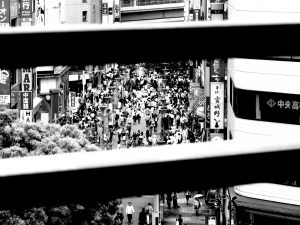
I asked Azizi about the intended audience for the book, and he told me a surprising thing. He says it “was a chance to blow off some steam.” It’s true that putting yourself in the way of punches and weapons takes its physical toll. But there are also the internal struggles, pushing your own limits, and overcoming ego, all of which build up pressure. This work was an outlet. At first, he had no intention of writing a book. “After all,” he says, “sensei already has books out and once you put something out there, you are basically competing with him.”
Azizi followed this first collaborative work with a series of books, starting with Shadow Inspiration: Dedications to a Budo Masterin 2015. This solo work is written in the Japanese literary form called zuihitsu. Readers of Japanese literature may be familiar with Sei Shonagon’s Pillow Book, or Essays in Idlenessby the monk Yoshida Kenko, representatives of zuihitsu works. Like these classics, Azizi’s books are collections of personal essays and reflections and observations of life. When I asked him why he chose this form of expression, he told me, “Ever since I began training, I’ve written like that. I didn’t even know what zuihitsu was until I read of a reference to it in my teacher’s book.”
Even his choice of genre is informed by his budo. When talking about tea, archery, calligraphy and other Japanese arts in English, the word do, or way, is used. Practitioners of the way of tea or katana immerse themselves in ways of seeing the world and living in it. Azizi has done this in his writing as much as his budo practice. He tells me he has another book on the way, also in the zuihitsu style, but has no hard deadline. As he says, art has its time. For now, he contributes essays on his other passions, sushi, Noh drama, and travel topics for various online magazines, and continues to capture in photographs images of the everyday in Japan.
Related Articles
Warning: Undefined array key "sfsi_threadsIcon_order" in /home/veremosglobal/tokyoroomfinder.com/public_html/blog/wp-content/plugins/ultimate-social-media-icons/libs/controllers/sfsi_frontpopUp.php on line 165
Warning: Undefined array key "sfsi_blueskyIcon_order" in /home/veremosglobal/tokyoroomfinder.com/public_html/blog/wp-content/plugins/ultimate-social-media-icons/libs/controllers/sfsi_frontpopUp.php on line 170
Warning: Undefined array key "sfsi_bluesky_display" in /home/veremosglobal/tokyoroomfinder.com/public_html/blog/wp-content/plugins/ultimate-social-media-icons/libs/controllers/sfsi_frontpopUp.php on line 266

